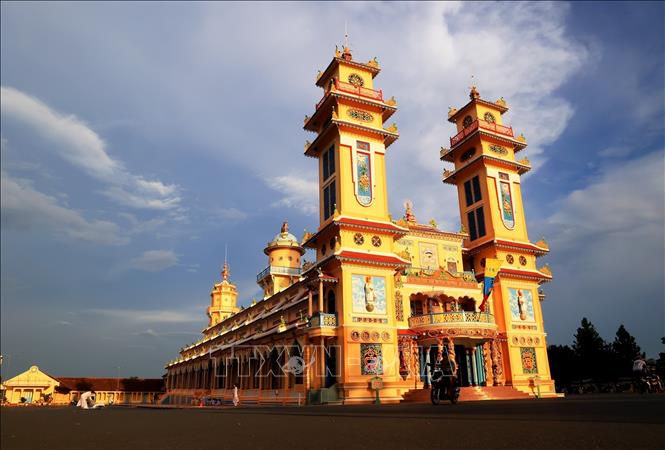-

Tay Ninh Holy See is a unique blend of architectural styles from various religions. VNA Photo: Hồng Đạt
-

The main entrance to Tay Ninh Holy See. VNA Photo: Hồng Đạt
-

The Octagonal Tower are eight trigrams that can be combined to represent all things through a combination of yin and yang. VNA Photo: Hồng Đạt
-

The Cao Dai flag has three colours: the yellow part is embroidered with six words in Chinese characters that identify the full name of the Cao Dai order. The blue part is embroidered with the Divine Eye and the three ancient dharmas. The bottom is red which represents Confucianism whereas the previous colours, yellow and blue, correspond to Buddhism and Daoism, respectively. VNA Photo: Hồng Đạt
-

The Divine Eye, symbolising the almighty, eternal God, can be found as engravings and decorations in Tay Ninh Holy See. VNA Photo: Hồng Đạt
-

The roof of Tay Ninh Holy See is the blend of Vietnamese slightly curved roof known as “trung diem thiep oc”, and Islamic, Taoism religious architectural styles. VNA Photo: Hồng Đạt
-

Tay Ninh Holy See is designed with the image of a dragon horse lying down majestically, its head toward the West and its two horns pointing straight to the sky. VNA Photo: Hồng Đạt
-

A Buddha statue standing on a lotus, and a Divine Eye sculpture in front of Tay Ninh Holy See. VNA Photo: Hồng Đạt
-

Nghinh Phong Dai (Dome of Canonisation) is a round tower that is 25 metres high. The dome has a curved arch that is inspired from the architecture of Indian and Middle Eastern churches. VNA Photo: Hồng Đạt
-

The main entrance to Tay Ninh Holy See. VNA Photo: Hồng Đạt